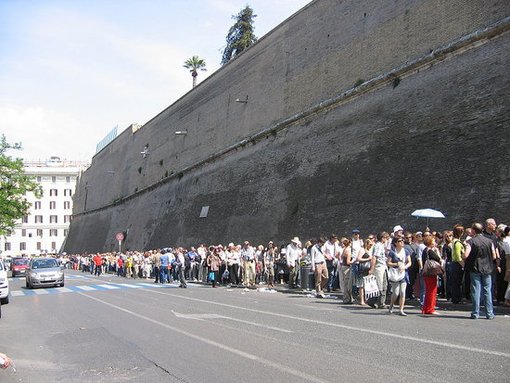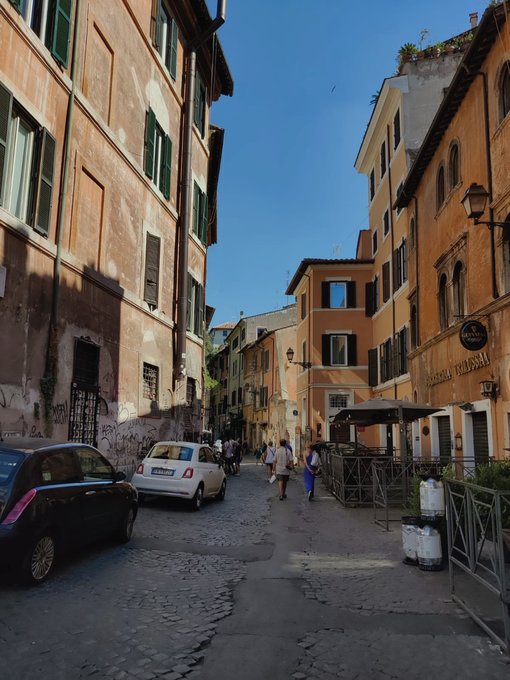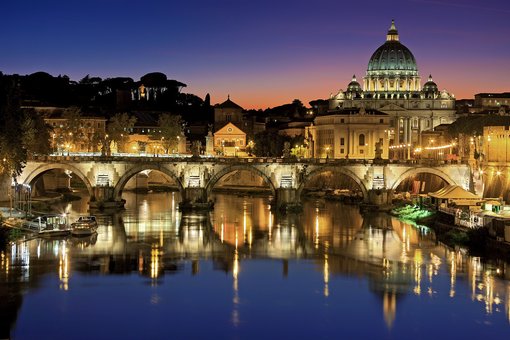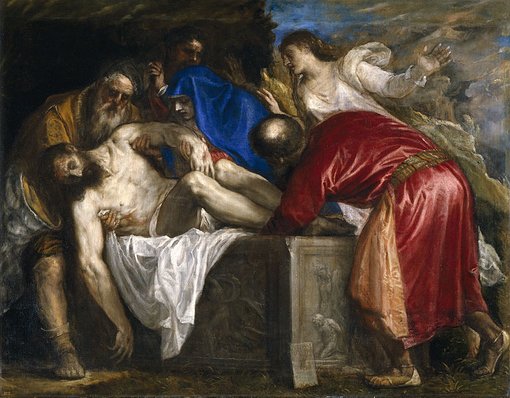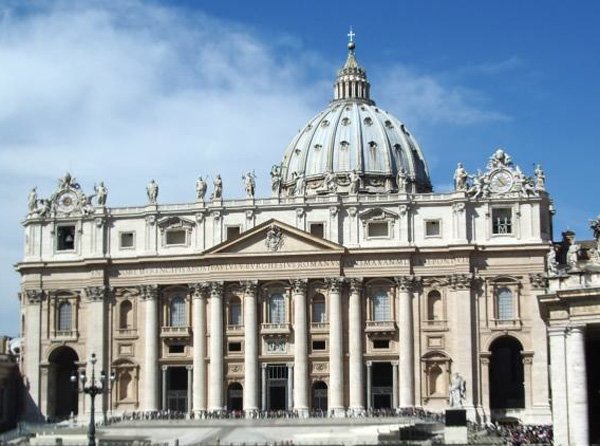
Saint Annes Gate main entrance to Vatican city
Vatican City is the smallest country in the world
Vatican City takes the title for several superlatives—some claim it houses the world’s most famous artwork, others say it’s the world’s most spiritual place for Catholics. But there’s one thing that’s unarguable and that’s that it’s the world’s smallest country. The independent city-state covers just over 100 acres. That’s smaller than New York City’s 843-acre Central Park, folks. With approximately 842 residents, it also happens to be the smallest country by population. But don’t let its size fool you—it has its own post office (and stamps for that matter), railway station, radio station, flag, and anthem; operates media outlets; and issues passports. It even mints its own euros (coins are embossed with the Pope’s head).
This is by far the smallest nation in the world. It also attracts more tourists than anywhere else in the world with nearly 5 ½ million visitors each year.
The Vatican wasn’t always the Pope’s home base
Before setting up shop in Vatican City, popes lived at the Lateran Palace on the opposite side of Rome. In 1309, the papal court moved to Avignon in France, and seven popes ruled from there. Upon their return to Rome in 1377, the Lateran Palace had been destroyed by a fire, and the papacy moved to the Vatican.
The Pope's bodyguards are all Swiss
Established in 1506 by Pope Julius II, the Pontifical Swiss Guard is responsible for the Pope’s safety. To get this kind of gig, your CV must include the following: Catholic, single, male, between the ages of 19 and 30, at least five feet eight-and-a-half inches tall, and Swiss citizen. Individuals must also have basic Swiss military training. For the most part, you’ll see them manning checkpoints and partaking in ceremonies, and with bright blue, red, orange, and yellow uniforms, you won’t have any trouble spotting them.
The Vatican Secret Archives are not so secret
Since Pope Leo XIII allowed scholars to visit the Vatican’s Secret Archives in 1881, they haven’t been so top secret. These days, only accredited researchers and scholars are free to glance at the documents and correspondences that lie within the walls. And there’s plenty of reading material—the documents span more than a 1,000 years. But don’t expect a leisurely library visit—browsing is prohibited and visitors must specify what they’re searching for from the get-go.
You can see one of the world's largest art collections here
Founded by Pope Julius II in the early 16th century, the Vatican Museums house one of the world’s greatest art collections. The museums shelter approximately 70,000 works—20,000 of which are on display and fighting for a spot your Instagram feed. Approximately four million visitors show up annually to marvel at highlights like the Michelangelo-painted Sistine Chapel ceiling, Raphael Rooms, and the Museo Pio-Clementino, to name a few.
Michelangelo wasn’t thrilled to work on the Sistine Chapel
Michelangelo was in his thirties and working on Pope Julius II’s marble tomb when he was asked to decorate the Sistine Chapel’s ceiling. Interestingly, he didn’t jump at the opportunity. In his defense, he considered himself a sculptor, not a painter. Still, he accepted the task and spent years crafting the legendary frescoes. Even more impressive is the fact that Michelangelo and his team used scaffolding to paint the ceiling while standing up. Today, the chapel is where elections for the new pope are held.
Wednesdays are your best shot for spotting the Pope
While there are several opportunities for a Pope sighting, every Wednesday around 10:30 a.m., he rides through St. Peter’s Square and addresses the public in many languages, concluding with a blessing for people in the crowd. Tickets are required, and information about reserving them can be found here. You can then pick up your tickets from a Swiss Guard at the Vatican’s Bronze Doors. They also often have extra tickets for those who forgot to reserve a spot. It might just be the highlight of your trip.
The Pope is the Head of State
The Pope is ex officio head of state of Vatican City since the 1860s, functions dependent on his primordial function as bishop of the diocese of Rome. The term "Holy See" refers not to the Vatican state but to the Pope's spiritual and pastoral governance, largely exercised through the Roman Curia. His official title with regard to Vatican City is Sovereign of the State of the Vatican City.
No one is a born a citizen
Unlike citizenship of other states, which is based either on jus sanguinis (birth from a citizen, even outside the state's territory) or on jus soli (birth within the territory of the state), citizenship of Vatican City is granted jus officii, namely on the grounds of appointment to work in a certain capacity in the service of the Holy See. It usually ceases upon cessation of the appointment. Citizenship is extended also to the spouse, parents and descendants of a citizen, provided they are living with the person who is a citizen. The Holy See, not being a country, issues only diplomatic and service passports, whereas Vatican City issues normal passports for its citizens.
The ATM speaks Latin
Turns out, all those years you spent learning Latin in school will finally come in handy. The Vatican Bank is the only one in the world to offer ATMs that address customers in the language. Quick tip: when you see “inserito scidulam quaeso ut faciundam cognoscas rationem,” it’s prompting you to insert your card to start. You’re on your own for the rest.

